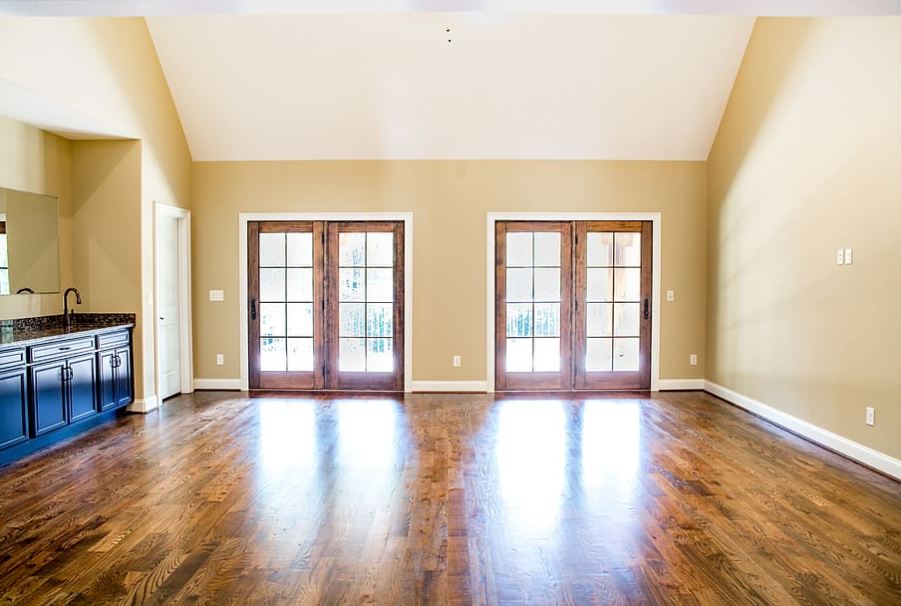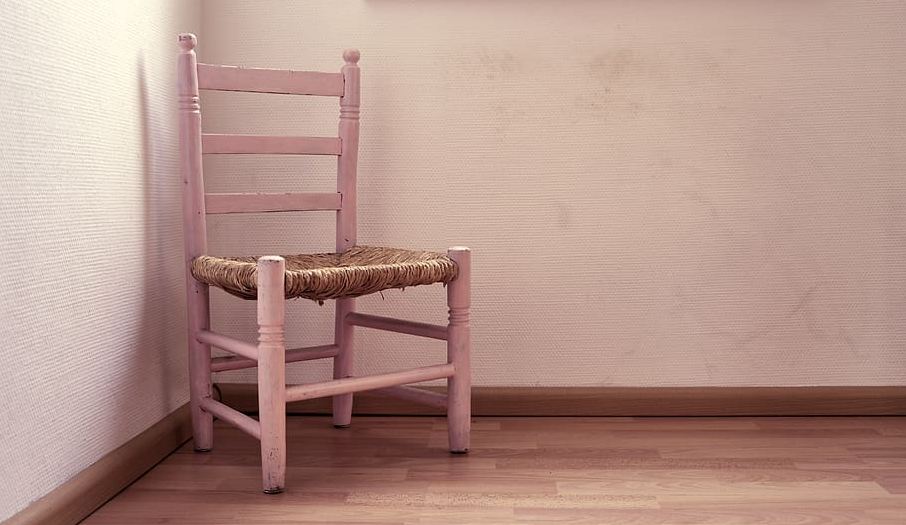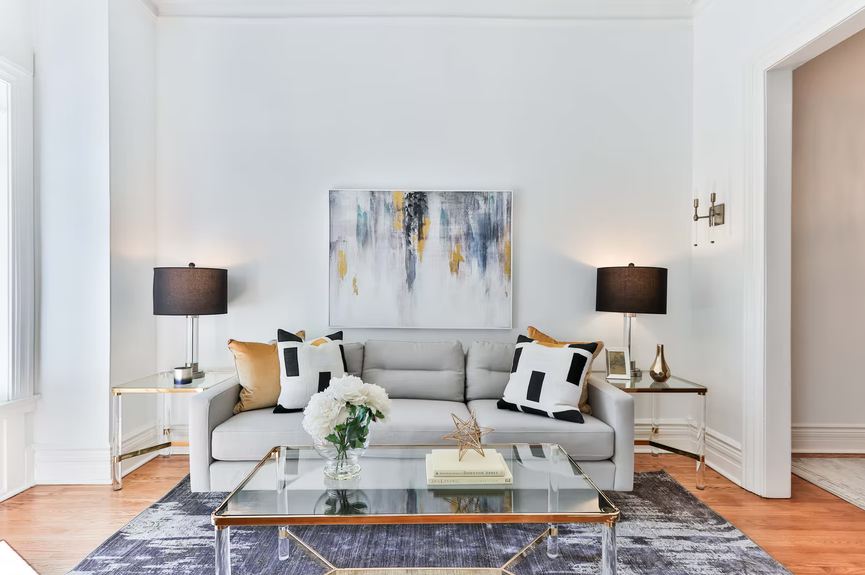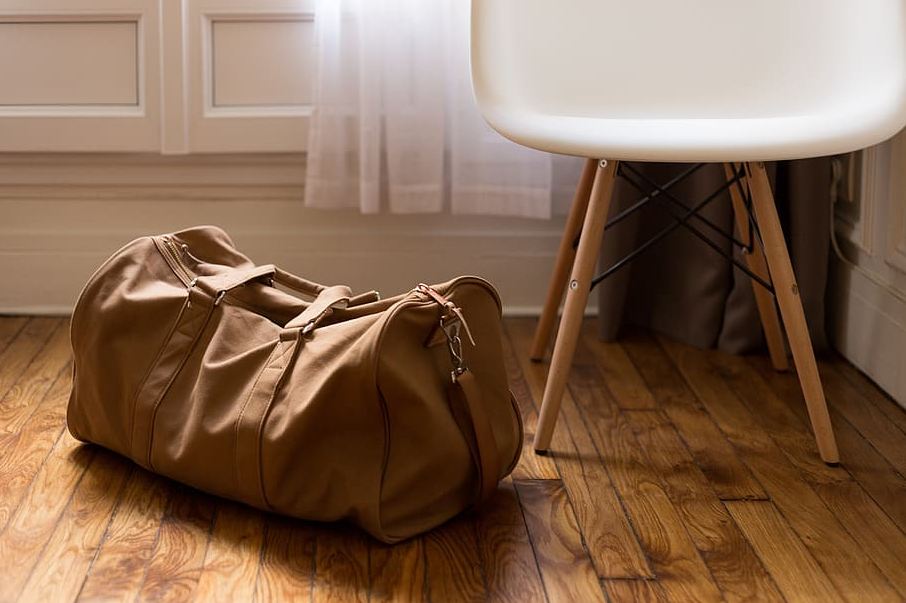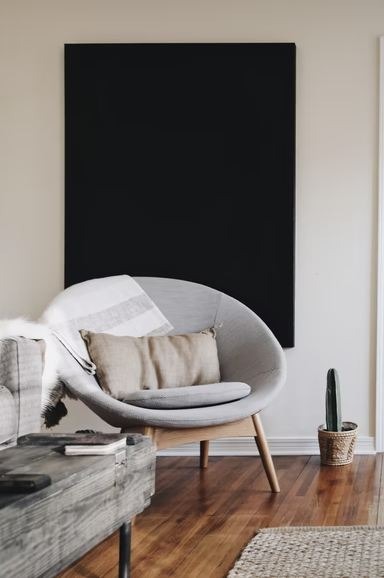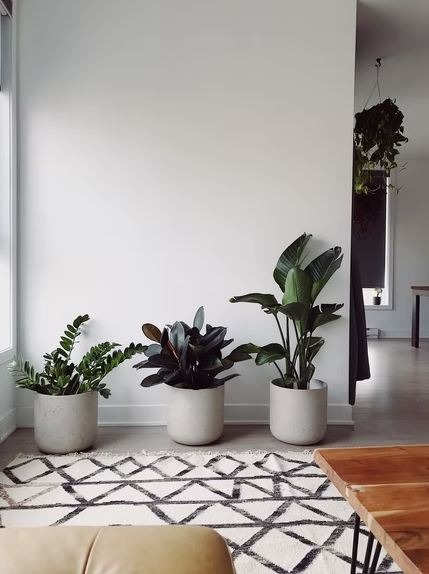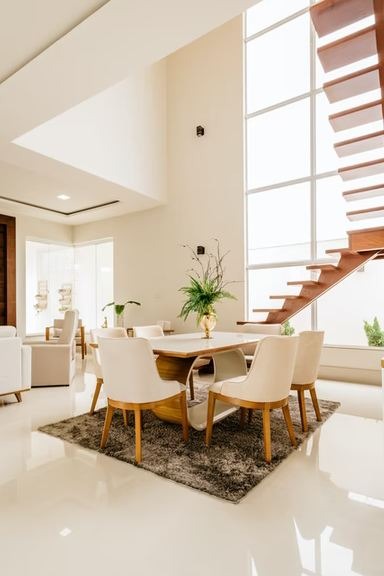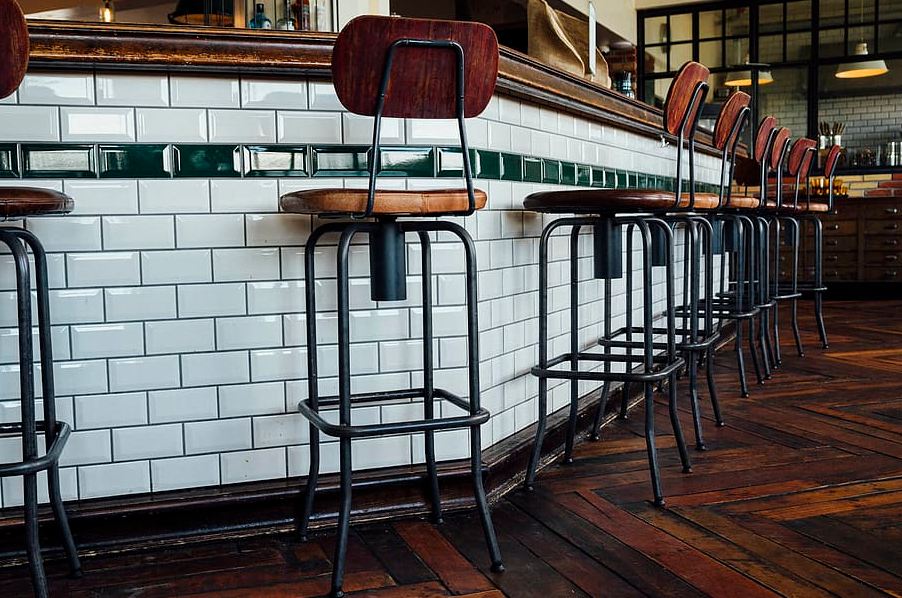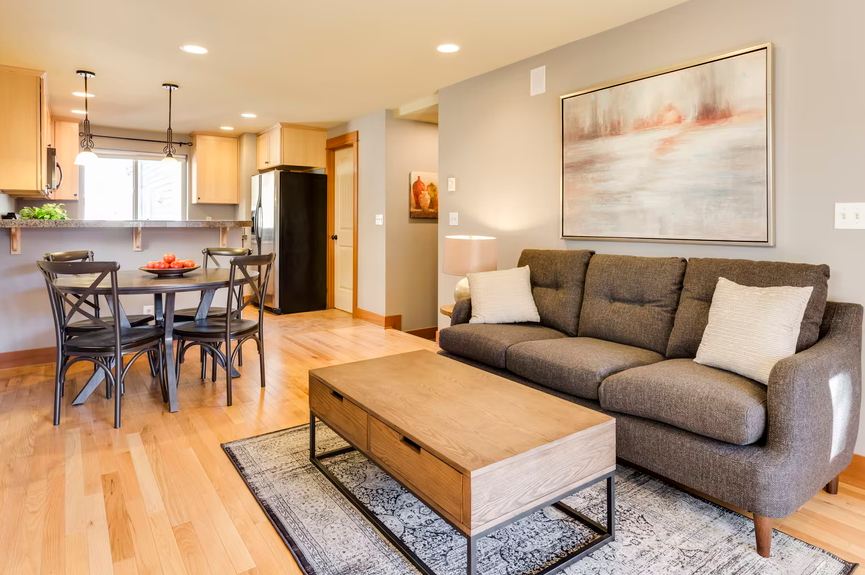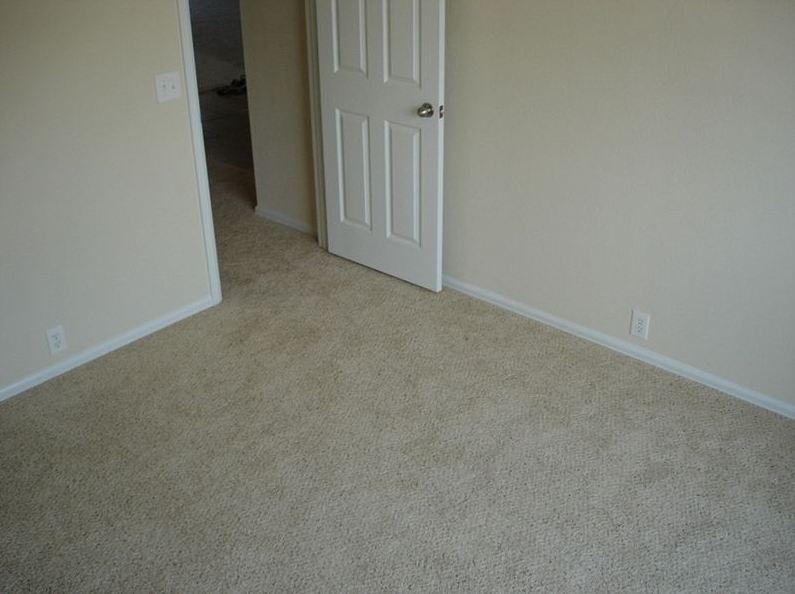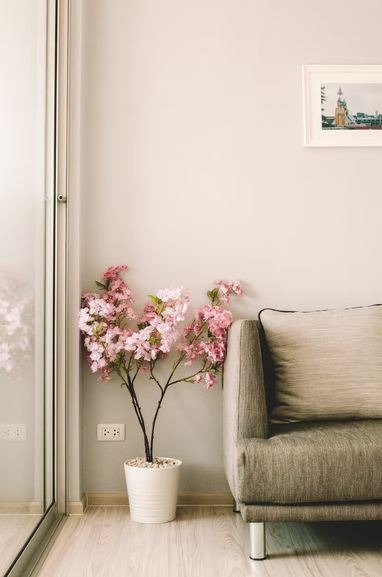Baseboards might seem like a minor detail, but a room with baseboards looks more appealing than a room without one. Small with a simple profile, baseboards are intended to blend in with a house and offer a big boost in your interior style. But with so many great options available to homeowners, choosing a baseboard can be a bit confusing. Here’s a guide to help you.
What are Baseboards?
Baseboards are installed partly for aesthetic reasons and mostly for covering the joints between the flooring and the walls. Just as crown moldings hide the area where the walls meet the ceiling, baseboards conceal the joint where the walls meet the floor, which can be unsightly. The baseboard adds extra visual interest to the house, but most importantly, it hides imperfections, contains any leaks, protects plaster walls from getting kicked or scuffed, and avoids getting things stuck into the cracks and crevices of the two materials butting up against each other can create.
Baseboards are not structurally necessary, and it is wise to install them into your home to add character to any room, increase the value of your house, and compliment other interior features such as crown molding and wainscoting.
Baseboard Molding Profiles and Types
Baseboards are available in a wide array of profiles or shapes, and many manufacturers make dozens of various options for homeowners to choose from. Typically, these profiles don’t have set names, but they go by the dimensions of the product.
1. Three-inch rounded and stepped baseboard
One of the most commonly used types of residential baseboards is the three-inch rounded or stepped baseboards. Basically, it’s a baseboard that’s about 5/8 to 7/8-inch wide and 3 to 3 ½ inches tall. The top of the trim has a gently rounded or subtly stepped shape to taper into the wall.
Because it’s mildly decorative, it is simple enough to blend in almost any interior design style. Its relatively short profile and simple shape make it suitable for modern houses. It’s also a great profile to choose if you have a more elaborate crown molding or another feature that you’d like to stand out.
2. Flat baseboard
A flat baseboard, or square baseboard, is the simplest style you can get. It is completely flat on the front and comes in different heights. It has squared-off corners, unlike the rounded or tapered options. It’s more versatile than other options because it looks good with or without crown molding or any elaborate window and door casings. Thanks to its clean, low-fuss look, it works on its own in everything, from contemporary to craftsman houses. If you layer another trim on top of it, you can make it work well with other architectural styles.
3. Clamshell baseboard
A clamshell baseboard is another simple baseboard option like the flat one, but unlike the more common style with a square edge, this one has a curved top.
4. Sculpted mid-height baseboards
This trim is known for being taller than standard baseboards, starting around at about four inches tall. The mid-height sculpted baseboard is about 4 to 5 ½ inches tall and about 5/8 inches thick. It has a decoratively shaped profile that can help your room stand apart from other more contemporary homes.
If you want to pack more of a style punch or if your house has a slightly more formal appearance, choosing this type of baseboard is the best way to go. A mid-height baseboard can also keep your room feeling and looking balanced if you like to incorporate crown molding into a room that doesn’t have high ceilings. It pairs well with any type of crown molding, but it’s best to use as a focal trim when painted or stained in a contrasting color to the floor or wall.
5. Tall sculpted baseboard
Taller baseboard styles start at around five inches and go up from there. It usually runs about 5-7 inches tall and coordinates with the mid-height version at 5/8 inches thick. This trim profile can add a more drastic accent to the wallboard. The taller it is, the more material it uses, so it becomes more expensive.
These baseboard styles work well with more decorative interior designs or older homes like Victorian or other classic styles. Also, if your house has high ceilings, you definitely want to scale your baseboards up to keep your trim looking adequately proportioned.
6. Back-profiled baseboard
Sometimes, you may want to upgrade your current baseboard, but removing it and replacing it with a new one would need a lot of work. Luckily, there are baseboard moldings that you can install right away without removing the existing ones.
The back profile baseboard has cut at the back of the baseboard instead of the front. This technique allows the baseboard to be placed over an existing piece and still lie just right to the wall. It’s done to either cover the existing baseboard without removing it or to reveal some in the back and create a stacked look.
7. Bullnose baseboard
Also known as a baseboard with rounded corners, bullnose baseboards are designed with safety in mind. If you’re one of those people who finds themselves frequently stubbing their toe on the corners of the baseboard, having this type of baseboard can save you and your items when bumping into it. The rounded corners also give a softer look.
8. Quarter round baseboard
A quarter-round baseboard has the shape of a quarter of a circle, hence the name. The very small circumference is decorative, but its primary purpose is to hide any gaps between the baseboard and the floor. This is added to the bottom outer edge of an existing baseboard, and it’s sometimes referred to as a base shoe. It’s typically made out of the same material as the rest of the baseboard.
9. Slant fin baseboard
Slant Fin is a baseboard brand specializing in baseboard heaters applicable for residential and commercial properties. This type of baseboard boils water to send through the pipes, making it an efficient source of heating – sometimes even better than the house’s central heating system. However, there are flooring and plumbing requirements needed before installing this kind of baseboard.
10. Jointed baseboard
If you have a traditional plain baseboard style but want to give it a little decorative touch, you can add a base cap on top. The shoe molding can go down on top of the base, and it can sometimes be used to cover up the gap between the baseboard and the floor.
Baseboard Styles
Now, matching the style of your baseboard to the style of your home can be tricky after you factor in all other things you have to consider. Here are a few examples of home interior styles and baseboard suggestions:
1. Colonial
Colonial design is known to be a bit classical, and it uses many decorative elements. It uses natural colors, and it usually doesn’t bring much attention to the baseboards. Wood is the typical material to use, as that is what was largely available at the time, and it’s either stained or painted white. Colonial baseboard styles tend to be pretty ornate and sculpted, too.
2. Modern
Baseboards for modern-style homes are minimalistic, and it doesn’t focus much on decoration. They tend to have a narrow base or a flat profile, and the color is usually similar to the wall paint. Sometimes, it is colored soft and white to keep it from standing out but still adding character to the room.
Besides flat baseboards, many modern baseboard styles feature a stepped design with straight edges or a recessed style where the baseboard is set in the wall itself.
3. Craftsman
The craftsman style is all about its craftsman – highlighting the beauty of the build and craftsmanship of the architectural details. Generally, craftsman interiors have handcrafted features or interesting textures. Baseboards on a craftsman-style home tend to be custom-made with a focus on moldings and millwork. Typically, they are made of durable hardwood for authenticity. Low-quality materials or poorly-crafted baseboards tend to ruin an otherwise perfect craftsman-style room.
4. Farmhouse
Farmhouse baseboards make the space look informal. Modern farmhouse spaces are all about creating inviting spaces with bright and light minimal design. So, it only fits that the best baseboard molding styles for a modern farmhouse motif are flat, simple, and angular. Simple baseboards and crown molding are common in farmhouse design. You can’t go wrong with white or cream colors to accentuate the style.
Baseboard Material
There are many great options when it comes to choosing a material for baseboards, and luckily, most materials allow for any types and styles mentioned above.
1. Wood
Wood is a beautiful and natural material that you can use as a baseboard. Back then, all baseboards were made of wood, but today, it’s among one of the most high-end choices.
If you want to go for wood, hardwood for the baseboard is the best choice. It’s your most durable choice. Oakwood is the most popular hardwood baseboard material, as it can give a luxurious look to the home. It looks beautiful whether painted or stained, smooth or carved or placed in the interior or exterior. But since wood is a renewable resource, real oak baseboards come at a premium price.
Meanwhile, pine baseboards are among the most affordable wood baseboards you can get if you want a wooden trim. It’s great for both interior and exterior use, and it can resist moisture. Jointed pine is primed and pre-treated, so knots and warping are removed. It’s also easy to install due to the flexibility of the wood.
However, these joints are glued together and can contain harmful chemicals. A pine baseboard without joints comes at a lower price but without the ease and good qualities of the jointing.
2. MDF
Medium-density fiberboard (MDF) is one of the most basic forms of baseboard, but features can be added by forming it into a profile and painting it by the color of choice. It’s typically painted since it doesn’t have a wood grain to whitewash or stain.
It’s a low-budget and easy-to-use product made of resin and wood fibers heated and pressed to the extreme. However, you can only use it for your interiors since they are not moisture-resistant or weather-resistant enough for outdoor use.
3. PVC
Besides pipes and other plumbing fixtures, PVC is a material that can also be used as a baseboard. This synthetic material is water-resistant and is great for kitchens and bathrooms where water is a concern. Since it can withstand elements, it can also be used for outdoor areas.
Unfortunately, it’s not as easy to install as MDF, as it requires drilling holes everywhere a nail must be placed, or else the PVC material can break.
4. Vinyl
Vinyl baseboards are a lot similar to PVC. It’s strong and available in any color imaginable. It comes in long rolls while it’s adhered to the wall by a strong glue. It’s a cost-effective, easy-to-maintain, and durable material compared to rubber. It can even mimic wood grain.
However, vinyl can crack or curl over time if not properly maintained or cared for. It also cannot be painted, and it can attract mildew, so it’s best to clean it regularly if placed in damp conditions.
5. Plastic
Plastic can come in almost any style or color, and it can be produced in large quantities. It’s mildew and rot-resistant. The color you buy upfront stays as painting plastic doesn’t tend to go well if you want to change the color. It’s durable, but it also needs to have holes drilled into it to avoid cracks and breaks. Though durable, they aren’t flexible, so they are not the material to choose in curved walls.
How to Pick the Right Baseboard Size
Baseboards usually come in different sizes, so it’s essential to get the right proportion of the ceiling height and room size to make sure it looks appropriate to the space. When it comes to wall base, the base itself usually runs from about ½ to 1-inch thick.
Here’s a guide when choosing the right size of baseboard for your home:
- For an 8-foot tall wall – 3-5 inches baseboard height
- For a 9-foot tall wall – 4-6 inches baseboard height
- For a 10-foot tall wall – 5-7 inches baseboard height
- For a 12-foot tall wall – 6-8 inches baseboard height
Generally speaking, the higher the ceiling, the taller your baseboard must be. If not, you’ll end up minimizing your room. An exception to this general rule is if you’re trying a more contemporary style.

